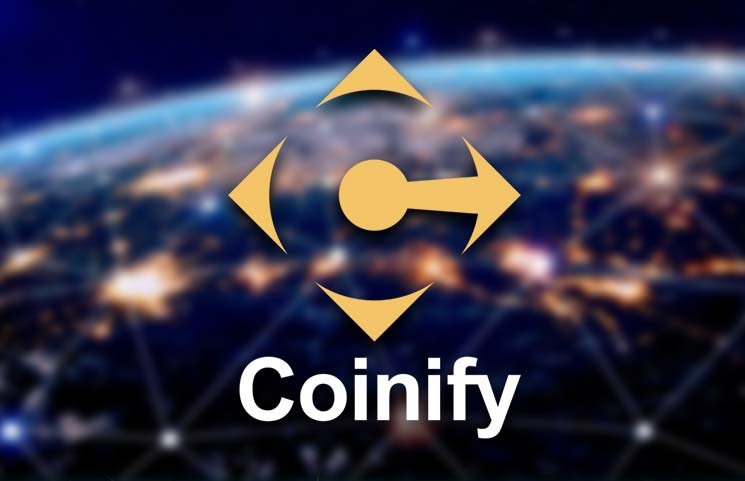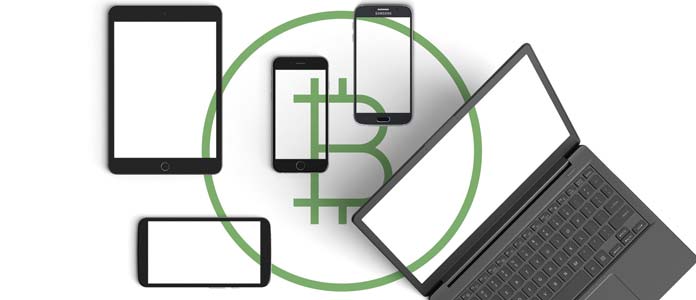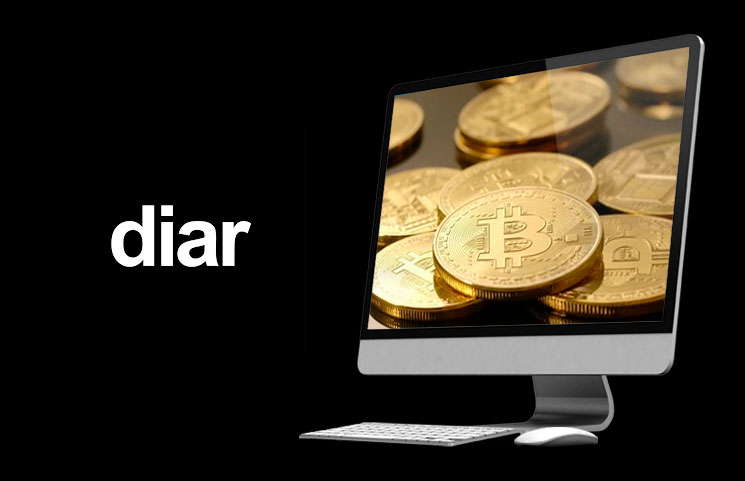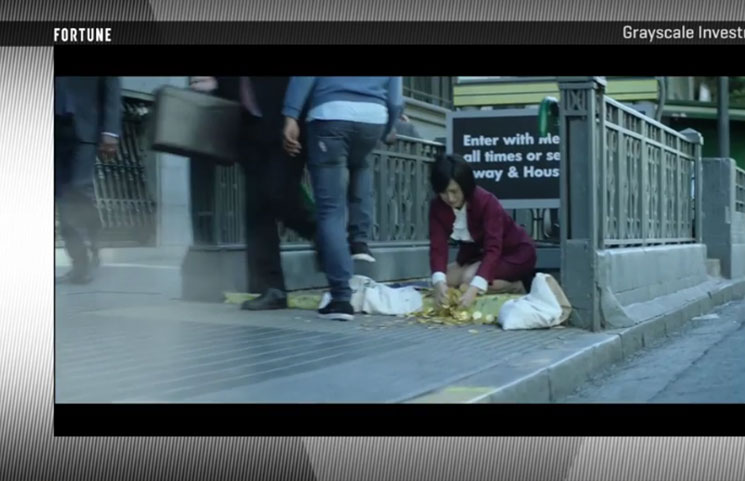Cryptocurrency Information
Coinify Exchange: Bitcoin Trading Platform & Blockchain Crypto Services

Coinify Exchange Review
The crypto word is witnessing adoption of the ICO model at an unprecedented rate. Indeed, the world at large views token distribution as commonplace nowadays. That said, few crypto companies have tried to forge ahead commercially while also improving the cryptocurrency experience.
Coinify is one such company, however, that has taken a route to enabling merchants to transact in digital currencies. Claiming lower fees overall and immediate payment conversions between fiat and virtual coins, Coinify is a business-facing project. Presenting a cryptocurrency payment platform offering bitcoin and 14 other virtual currencies, Coinify is essentially a digital payment gateway.
The stated aim of the platform is providing better rates, greater convenience and absolute security to end users. An exchange in the true sense of the word, vendors employing Coinify can accept the listed cryptocurrencies as payment, and can then opt to be paid in fiat currencies like EUR and USD if desired.
Users can also buy and sell bitcoin and others, either employing digital currency from a wallet or conventional routes like MasterCard, Visa or even EFT. Traders on the exchange can sell their bitcoin and be paid in fiat deposited into their bank accounts. Moreover, the company claims that its merchants experience an overall margin betterment of around 3% by transacting through the platform.
A finely-tuned technical project, Coinify [Coinify.com] is also a careful pitch to users based on their lower fees when compared to the banks. Coupled with this is the desire for this preferential offer to come at no compromise to UX. Coinify not only claims lower fees, they have also ensured that the user experience is nothing less than a modern standard for fintech protocols.
Coinify Services

Although a seemingly simple offer, Coinify and other exchanges know that the battle for adoption lies in the two bugbears of altcoins: fees and speed. The company has ensured that a digital or fiat transaction via the exchange is more cost-effective than a bank action. Especially enticing for merchants who suffer legacy charges on a constant basis, by connecting new and existing technology, Coinify is among the companies pushing cryptocurrencies as better, not just an option.
As with other competitors, users can trade digital currencies, pay with them or simply add the methodology of crypto payments to their offering. Individual traders looking to buy into altcoins as well as business owners who want to bring alternative payment options into the fold can both benefit from the exchange. Larger corporations too can employ the Coinify API as a white label payment solution to suit their needs. Government and other large payrolls are all theoretically not only enhanced, but also cheaper and at least as fast on the Coinify network.
Coinify Products
The company pitches two broad divisions – For Trade and For Merchants. Coinify For Trade has been a later offering from the platform. In a nutshell, it will accept a person’s legacy fiat payment for bitcoin or any of the offered altcoins, and then send those virtual funds to the user’s wallet for trade or transacting.
Users can employ their bank cards to purchase bitcoin and others and, in the event of a newcomer lacking a wallet, Coinify will assist with setup as a part of the transaction. Users value the swift swapping out of currencies, and being able to “cash out” of bitcoin as needed for minimal expense appeals to many. Very much like 24/7 banking services, there is no limit on transacting between currencies, and some traders even scalp on buoyant pairs to generate small daily profits through the exchange.
Coinify For Merchants was and remains the exchange’s original bitcoin payment gateway. This aspect sees merchants accepting virtual currency payments at zero risk to them, while being able to expand their offer by accommodating users paying with digital currencies. Merchants can even opt to collect local currency at a local venue if so desired, to swap out received bitcoin.
Largely expecting to become a default, baseline service offering, Coinify’s “crypto welcome” stance is heavily geared towards ecommerce, facilitating those with an online store. The Coinify platform not only allows merchants to accept virtual payments from across the globe, the service lands cheaper than existing internet protocols like PayPal.
Much tech development sits behind the platform that ties into shopping carts and payment buttons, and kicks in wherever a user may be shopping online with a Coinify merchant. The company has made much of a seamless fit with ecommerce, recognizing the looming value as online retail expands.
A client on the Coinify For Merchants platform may display a dollar price, but a user wishing to pay with bitcoin, for example, sees the price quoted in BTC. The platform fixes an exchange rate at the time of purchase, avoiding fluctuations, a big negative for ecommerce to date. With most credit card payment services only paying merchants for transactions at month’s end, Conify’s next-day offering is a notable improvement for many.
Adding to its ease of use, Coinify has a created hybrid app that allows vendors to physically accept bitcoin payments as well. This point of sale solution has received a positive response from retailers, market vendors, taxi drivers and other professionals who make use of the face-to-face transaction facility.
Coinify has no sign up or transaction fees, no processing cap and no chargebacks. If a merchant’s goods are priced at $50, for example, the full $50 appears in their account after a sale.
Although Coinify’s available intel doesn’t divulge the method used to determine exchange rates, the company’s profit has to lie in pegging an exchange rate for a buyer that allows it to skim a small percentage. There is no indication of whether the percentage is fixed, based on current prices at the time, nor what that percentage might be. The notable omission of specific fees and other exchange rate charges that are absent from Coinify’s online intel is sometimes considered one of its cons.
Apart from the active products, Coinify also has an “Innovation Lab” where blockchain-based proof of concepts emerge from constant research and development. Activity in the lab includes a recent collaboration with Nets, the largest digital payments company in Europe. Coinify’s onsite bona fides extend to partners in “governmental organizations, NGOs, and other corporations.”
Coinify User Ratings

Founded in 2014 and based in Copenhagen, Denmark, Coinify has unfortunately picked up its fair share of flack from users. It would appear that, much like many other crypto payment solution providers, it has focused on fishing for larger clients unto whom it gives most of its attention in order to gain traction.
User reviews and comments on bittrust.org and others are scathing in their appraisal of the platform, and cases of funds completely lost and other apparent misfortunes abound. To be fair, the company makes some effort to answer users, even when the issues are not inherent to the platform, but Coinify risks losing a swathe of adoption by bread and butter users due to poor individual UX.
Coinify’S co-founder and CEO is Mark Højgaard. The company CPO and other co-founder Lasse Birk Olesen is capably supported by the CTO, Jeppe Nejsum Madsen, CFO Peter Nordgaard, and the CCO Rikke Stær.
While the site’s testimonials are unsurprisingly glowing, while a dark body of complaint accompanies the platform’s journey, it remains a long way from being a truly seamless, modern currency facilitator.
Coinify in Conclusion
The Coinify platform is potentially an extremely swift and fluid payment solution for many. Unfortunately, however, while much could be forgiven last year of companies trying to establish polished offerings with an emerging technology, those days are over. Now, any company reaching the heights of a financial exchange cannot afford the shocking press Coinify has collected over the last year.
Serious user complaints persist for 2018, hence it appears that they are indeed succumbing to the same malaise that has plagued others. Although theoretically smart and admittedly the kind of payment solution provider needed by a world slowly coming up to speed with crypto, users are advised to transact with a low initial value and determine the quality of experience for themselves.
Cryptocurrency Information
Bitcoin Volumes Finally Grow Again and Bitfinex/Tether Issues Spark Systemic Risks, New Diar Report Affirms

Diar has recently published its report of the crypto market for April. According to the company, Bitcoin volumes are finally growing again and the whole situation with Tether and Bitfinex showed the industry some of its systemic risks. DAI fee hikes and stablecoin projects were also highlighted in the report.
Bitcoin Goes Back To Growing Again
The main highlight of the month is, obviously, that Bitcoin is back on the action. After facing lows which started in 2018, the token has finally been able to effectively reverse the trends and have an actual price surge this month, going from less than $4,200 USD to over $5,200 USD during this short timeframe.
With this, the number of on-chain transactions has spiked for three months in a row, since prices started to get some of their value back in March and April. Now, transaction volumes are around their levels in June 2018 when the price of the asset was around $7,000 USD.
However, charts indicate that Bitcoin is yet to find more footing outside of speculative trading, so the bull market may not be as near as some think.
When looking at the volume of the whole quarters, Q1 2019 had lower volumes than Q4 2018, but Q2 2019 started considerably well.
Bitfinex and Tether Start Concerns of Systemic Risks
As you may have heard, Bitfinex was accused of using Tether funds to cover up its losses. According to Diar, there is a 26% shortfall of in-cash reserves to back Tether tokens (USDT). Tether loaned $850 million USD to Bitfinex to cover up losses and its general counsel Stuart Hoegner has affirmed that the company is operating with fewer reserves than the total market cap of the token.
This happened because Bitfinex had the $850 million USD “seized” by Crypto Capital, one of its payment processors. Unless Hoegner is lying, though, the company had the assets to back the stablecoin until recently.
While it is clear now that Tether simply does not have the money to back the funds, people simply keep buying the tokens. Now, instead of all cash, some shares of Bitfinex are being used to represent the rest of the value, which makes the stablecoin enter securities territory for the first time.
Curiously, the markets are all very tolerant now since the prices are still stable but the systemic risks are clear, especially if other companies are to follow Tether’s path.
DAI Hikes Fees Once More
Another situation highlighted by the reports is that DAI has decided to upgrade its stability fees once again as the community is desperately trying to make the prices of the so-called stablecoin go up again. DAI tokens are being sold for less than $1 USD, their official price, on secondary markets.
At the moment, the fees are 16.5%, after increasing three times in only one month. Before April, the fees were only 7.5%. This has resulted in a decrease of 4.9% in the circulation of DAI tokens.
Stablecoins Eye Wider Use Cases
Gemini and Harbor, a A16Z tokenized securities platform, have started a partnership in order to get more clients for the Harbor stablecoin. However, this was deemed “too soon” by Diar, as Harbor does not have any known token right now. The only one the company had was canceled.
TrustToken is also trying to get more stablecoins on its list, especially the ones that are not focused on USD, but on several other fiat currencies like HKD, CAD or GBP instead.
Cryptocurrency Information
#DropGold Campaign to Hit Your TV, Here’s A Breakdown of the Underlying Bitcoin Message(s)

Grayscale, a leader in digital currency investing, launched an ad on Wednesday, May 1, telling investors that money should be contributed to Bitcoin holdings as opposed to gold. In a number of interviews, CEO of Grayscale’s parent company (Digital Currency Group), Barry Silbert and Managing Director of Grayscale, Michael Sonnenshein, have since expressed the underlying message of the ad.
The #DropGold Ad
According to news outlet, U Today, the ad starts off with a man holding gold bars in his arm, which he decides to drop. While doing so, a woman also does the same. Throughout the ad, people supposedly have their gold bars stacked in shopping carts, while “losing their gold coins.” Watching what’s about to unfold, the two individuals try to find their way out.

Advertising Bitcoin or Grayscale’s Services?
Despite being the one to have introduced this campaign, Silbert argues that it isn’t entirely about Grayscale services, but rather said services being a result of consumers’ decision. Yahoo Finance has since quoted the following comment made by Silbert himself:
“We do not see this as a Grayscale commercial. For us #DropGold is our ‘Got Milk’. This campaign is first and foremost focused on starting a conversation about bitcoin vs gold. If the ad makes people want to get into Bitcoin, we’re completely indifferent about how they go about doing it.”
Having said this, the commercial is evidently portraying Grayscale as an option, as towards the end, one is told, “Go Digital. Go Grayscale.”
Silbert’s and Sonnenshein’s Arguments Regarding Gold’s Limitations
Silbert believes that this campaign works towards addressing the fact that Bitcoin can serve as an equal asset class as gold, if not better. In particular, he was quoted saying, “But now you have Bitcoin, which, in our opinion, provides all the same attributes as gold – it’s fungible and scarce and you can’t counterfeit it – but the big difference is that Bitcoin has utility. Gold doesn’t have much utility beyond jewelry.”
He further argued that the goal here isn’t to replace fiat currency for shopping purposes, but rather to show the world that Bitcoin does a better job at doing gold’s job and this will be evident in the long run. Although he has acknowledged Bitcoin’s volatility as being concerning, he is hopeful that it will one day serve as both an ideal utility token and store of value.
As for Sonnenshein’s viewpoint, he sees this ad as revealing the “absurdity” associated with gold. More specifically, he said:
“We’re going after a narrative around gold being where investors should go when markets turn south or as a hedge against inflation […] we’re highlighting the absurdity of gold.”
As per The Block Crypto, Grayscale also tries to convince investors that the return earned from redistributing 5% of gold to Bitcoin will be greater than 5% yearly.
What are your overall thoughts on this ad? Did it leave you asking yourself, “Why did you invest in gold? Are you living in the past?” Share your thoughts below!
Cryptocurrency Information
Huobi Pro Bitcoin Exchange: Cryptocurrency Asset Trading Platform?

Huobi Pro Cryptocurrency Exchange
Founded in 2013, Huobi Pro allows for a myriad digital currencies to be exchanged, at a 0.2 percent trading commission. Loyal users point to the low fees and stellar service that make the exchange stand out above others.
Although pitched at dedicated cryptocurrency enthusiasts since the site doesn’t accept fiat currencies many who enter the realm on the back of fiat end up at Huobi Pro, largely due to its diverse offering and favorable fee structure.
Huobi Pro in A Nutshell

A victim of China’s clampdown on digital currencies, the company might be registered in the Seychelles, but was originally founded in Beijing. As testament to the broad appeal of the platform, after the Chinese regime effectively banned all things crypto at the beginning of 2018, trading volumes have only grown.
While at first very much a Chinese company looking at the home market, Huobi Pro has been forced to find a wider marketplace on the international scene. Indeed, even prior to the official cessation of altcoins and their trading, the company heard the rumblings in 2017 and took its cryptocurrency interests abroad.
Huobi now provides exchange services to users in over 130 countries. Company offices are located in the USA, Korea, Japan, Singapore and Hong Kong. Although the Huobi Group also owns and manages the Huobi Autonomous Digital Asset Exchange (HADAX), Huobi Pro is more of a pure “login and trade” exchange.
Users can employ network tokens to cast votes on adding new altcoins on HADAX. On the Huobi Pro exchange, a simplified offer encompassing all of the mainstream altcoins greets visitors. Some more popular coins offered are Bitcoin (BTC), Bitcoin Cash (BCH), Ethereum (ETH), Litecoin (LTC), NEM (XEM), NEO (NEO), Qtum (QTUM) and Ripple (XRP).
That said, when one actually tallies the number of altcoins available for exchange, it becomes apparent why loyal followers value the site. A marriage of both simple ease of use and diversity in trading, the platform is largely welcomed by newcomers and experienced enthusiasts alike. In the current melee of regulation being contemplated, implemented and tweaked all the while, some users may be precluded from trading on the exchange based on their country of residence.
Huobi Pro accepts the funding of accounts only in digital currencies, and accepts deposits in any of its listed altcoins. Unlike other exchanges that have opted for a midway between crypto and fiat, Huobi Pro traders deal strictly in digital coins at every point of a transaction. Funds need to be withdrawn to a wallet, and fiat users looking to buy in will have to establish a wallet first in order to fund their Huobi Pro trading account.
Traders pay a maker or taker fee of just 0.02 percent using the exchange. There are more detailed offers, worth looking at for daily traders with volume.
Huobi Pro Membership Levels

VIP users get preferential platform trading fees if they buy the privilege with Huobi tokens. The Huobi Token (HT) was never an ICO token, but rather a system token that users only obtain by buying “Point Cards” on the Huobi Pro platform. Point Card is essentially a pre-paid Huobi card that keeps users liquid on service fees. One HT = 1 USD, therefore one “point” = 1 USD. The more points purchased, the more free points are added, although savings on 1000 points, for example, means only 10 HT for free.
Huobi Global minted a fixed total of 500 million tokens, with 300 million employed to facilitate the in-house VIP structure. A mark of the business group behind the platform is seen in their practice of buying back-sold tokens from the open market each quarter. Not only that, but those funds go towards the Huobi Investor Protection Fund (HIPF).
This is a planned fund that will compensate investors who suffer platform disruption and subsequent losses. It’s a tool that minimizes risk, smooths out the market overall and also goes towards protecting investor interests. This transparent and pleasing aspect of the platform is one reason traders have confidence in the exchange, and its popularity is rising worldwide.
By way of example, in order to glean a VIP status, a trader will pay 120 HT a month for First Level membership. This enables a 20 percent discount on trading fees. Running through toward the top end, a pricier option of 6,000 HT a month secures a 50 percent discount on fees. Overall, a diligent trader can optimize the system and come out with a substantial discount on the already low 0.02 percent base offer.
The company charges no fees to deposit funds, but there are withdrawal fees. Although there are reviews online listing withdrawal fees, it appears that, especially within the membership structure, users are advised to ascertain exact fees when establishing their account. Likewise, transfer limits need to established upfront to avoid disappointment later. There exist order size limits on the platform too, again becoming more malleable as one moves up the ranks of the VIPs.
Security And UX On Huobi Pro

All of the standard protocols including two-step Google Authenticator verification are at play on the platform. Unlike many other exchanges that offer a simple crypto-exclusive platform, Huobi Pro will need your personal details in the form of a passport copy and chat room comments are not devoid of complaints, although almost all of them take issue with the structure of the platform and its potential pitfalls. There are few allegations of lost funds or other negligence on behalf of the company. On the whole, Huobi Pro seems to be rubbing off its decidedly corporate ethos onto the exchange – good news for traders overall.
Another serious boon for the cryptosphere as a whole is that over 98 percent of holdings are stored in an offline cold wallet or vault. Imbued with a strict customer service ethic, the platform probably sports the best customer service to date for crypto exchanges. Available 24/7 365, there is a live chat option onsite.
The platform intel is sufficient although newbies might have to scratch to paint a clear picture of how exactly everything works. The FAQs are thoughtful and, again, testament to a polished offering. Huobi used to be one of the biggest Chinese crypto exchanges, based in Beijing. Started by entrepreneur Leon Li in 2013, since the move there has been mutual appreciation of its value. Worldwide users have taken to the exchange, as it too realized that it had global appeal.
Huobi Pro Conclusion

Huobi claims to have exceeded BTC 500,000 in daily trading approaching 2014. Although only in its fifth year, that’s a long time in cryptocurrency. Although frequently accused of embellishing trading volumes, these allegations have never been proven. In comparison to other digital exchanges that have suffered persistent user complaints and even been shut down due to criminal activity, Huobi Pro shines.
As an offering, it has low fees, great diversity and an unbeatable crypto-energy. No trader on the platform feels like they’re missing out on something else somewhere else, by most accounts. Possibly due to their prior involvement in the fintech world, the platform got it right first time around and user numbers prove it. The company Huobi also owns another trading platform, BitYes, more focused on USD/BTC and USD/LTC pairs trading. Great customer service and minimal technical glitches have made it appear positively top-tier, again in comparison to less polished outfits.
With a detailed offering, great client liaison – very unusual for most digital exchanges so far – and no legitimate proof of anything even vaguely dark hanging about them, the Huobi Pro project is recommended. Users are advised to always ascertain costs prior to trading – not hard with the customer support in this case – and sample a platform with small trades before trading greater amounts. To learn more, you can head to their official website: huobi.pro











